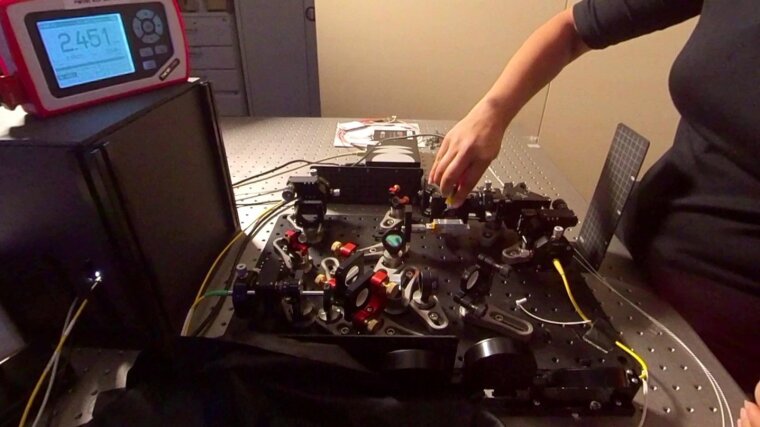
The aim of this experiment is to align and characterize a spontaneous parametric down-conversion (SPDC) source. SPDC is a second-order nonlinear process wherein a higher-energy pump photon spontaneously decays in a non-linear crystal, generating two lower-energy photons known as signal and idler. Energy conservation governs the frequencies and wavelengths of the generated photons. Additionally, efficient nonlinear interaction necessitates momentum conservation, ensuring phase-matching for the propagating waves. Birefringent materials are commonly employed to achieve phase matching. Different types of SPDC processes are categorized based on the polarization of pump, signal, and idler photons. Quasi-phase matching (QPM) can be realized by periodically modulating the crystal's nonlinearity, allowing for efficient SPDC even when phase matching conditions are not met. The experiment involves varying the crystal temperature to control phase mismatch and consequently, the frequencies of the generated SPDC photons. The statistical properties of the photon pairs are analyzed using the second-order correlation function (g(2)), measured through coincidence counting between two detectors. Heralding efficiency is evaluated to assess system performance.
Further content and detailed descriptions are available to enrolled students via the course's page at the Moodle website of the Friedrich Schiller University Jena.